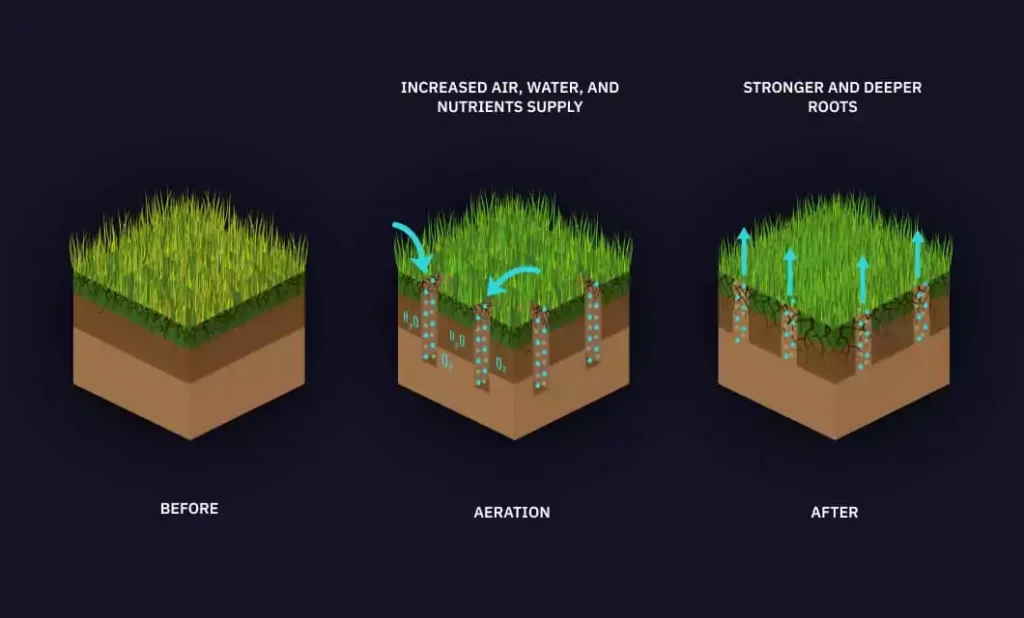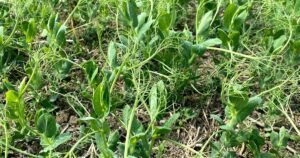
soil aeration.webp.webp

Soil Aeration
Soil aeration refers to the presence of air in the soil pores, essential for promoting root respiration, microbial activity, nutrient cycling, and overall soil health. Adequate soil aeration is crucial for sustaining plant growth and productivity in agricultural ecosystems.
Definition:
Soil aeration is the process by which air enters and occupies the pore spaces within the soil matrix, facilitating gas exchange between the soil and the atmosphere, including oxygen (O2) uptake and carbon dioxide (CO2) release.
Fall off the barn roof and busted your keister? Life on the farm or ranch can be tough on the bum. Need a break? Laugh it off at FarmerCowboy.com, the #1 farm humor site. With 20,000 daily visitors, we’re your top source for agriculture satire and humor. Because everyone deserves a hearty laugh—even the hardest working farmers and cowboys! Join us and turn those long days into fun tales at FarmerCowboy.com.
Factors Influencing Soil Aeration:
- Soil Structure: Well-aggregated soils with stable aggregates and porous structure promote air movement and diffusion, facilitating soil aeration, while compacted soils impede airflow and oxygen diffusion.
- Organic Matter Content: Organic matter improves soil structure, enhances porosity, and increases soil aeration by creating macropores and providing habitat for soil organisms involved in decomposition and nutrient cycling.
- Water Content: Proper soil moisture levels are critical for maintaining soil aeration, as excessive water saturation restricts air movement and oxygen availability, leading to anaerobic conditions and root suffocation.
- Root Respiration: Plant roots consume oxygen during respiration, creating a demand for oxygen in the rhizosphere, which influences soil aeration dynamics and root health.
- Microbial Activity: Soil microorganisms play a vital role in organic matter decomposition, nutrient cycling, and soil structure formation, requiring oxygen for aerobic respiration and metabolic processes.
Importance of Soil Aeration:
- Root Health: Adequate soil aeration ensures sufficient oxygen supply to plant roots, promoting root growth, nutrient uptake, and overall plant health and productivity.
- Microbial Activity: Oxygen availability supports aerobic microbial populations involved in organic matter decomposition, nitrogen fixation, and nutrient mineralization, enhancing soil fertility and ecosystem functioning.
- Nutrient Cycling: Proper soil aeration facilitates nutrient transport and cycling within the soil profile, promoting efficient nutrient uptake by plants and reducing nutrient losses through leaching or volatilization.
- Water Drainage: Soil aeration improves water infiltration and drainage by maintaining soil structure and pore continuity, reducing waterlogging and surface runoff risks.
- Disease Suppression: Aerobic soil conditions inhibit the growth of anaerobic pathogens and disease-causing organisms, contributing to disease suppression and plant protection.
Assessment and Management:
- Visual Inspection: Field observations of soil structure, root health, and waterlogging symptoms provide insights into soil aeration status and potential management needs.
- Soil Compaction Testing: Penetrometer measurements or soil compaction tests assess soil compaction levels and identify areas requiring remediation to improve soil aeration.
- Aeration Practices: Aerating compacted soils using mechanical tools, such as aerators or subsoilers, enhances soil porosity and aeration, promoting root growth and microbial activity.
- Organic Amendments: Incorporating organic matter, such as compost, manure, or cover crops, improves soil structure, increases porosity, and enhances soil aeration over time.
References:
- United States Department of Agriculture. (n.d.). Soil Aeration. Retrieved from https://www.nrcs.usda.gov/wps/portal/nrcs/detail/national/soils/health/aeration/
- Soil Science Society of America. (2021). Soil Aeration: Implications for Agriculture and Environment. Retrieved from https://www.soils.org/discover-soils/soil-basics/soil-physical-properties/soil-aeration
- Food and Agriculture Organization of the United Nations. (2006). Soil Aeration. Retrieved from http://www.fao.org/3/Y4303E/y4303e06.htm
Originally posted 2019-08-17 15:14:11.
Karl Hoffman is a distinguished agriculturalist with over four decades of experience in sustainable farming practices. He holds a Ph.D. in Agronomy from Cornell University and has made significant contributions as a professor at Iowa State University. Hoffman’s groundbreaking research on integrated pest management and soil health has revolutionized modern agriculture. As a respected farm journalist, his column “Field Notes with Karl Hoffman” and his blog “The Modern Farmer” provide insightful, practical advice to a global audience. Hoffman’s work with the USDA and the United Nations FAO has enhanced food security worldwide. His awards include the USDA’s Distinguished Service Award and the World Food Prize, reflecting his profound impact on agriculture and sustainability.



